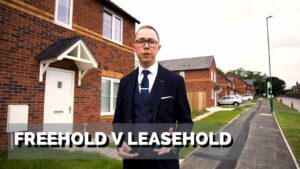Leasehold Start
Until 1925, the only way for people to own property was through a long lease. Today, this system is still very common, but a new type of estate was introduced in the UK 16 years ago: the Commonhold. It gave flat owners real ownership rights over their buildings – instead of a long lease.
It is important to understand when did Leasehold Service Startup, as it can make a big difference to the value of your property. Many buyers don’t think about it, but the wrong tenure can cost you a lot of money in the future.

The term “leasehold” refers to an asset or property that a lessee contracts to rent from a lessor (property owner) for an agreed-upon period in exchange for scheduled payments. This can include commercial real estate such as office buildings, or residential properties such as homes and condominiums.
When Did Leasehold Start?
There are many different types of leasehold, including those where the tenant owns the land as well as the building. Other leaseholds allow the tenant to occupy a part of the property, and then rent it out at a later date.
Leases can be for a certain number of years, or even for the lifetime of the building. Those with long leases are often called ‘owner occupiers’, and they enjoy the benefits of being able to live in their homes for many years and a lower rent than other tenants.
This was the first step towards the development of the modern freehold estate that is recognised in English Law today, and it is considered to be a major achievement by the country’s legal historians. It is also one of the reasons why our land law is so complex, with a confusing set of rules that are often difficult to decipher.
As a result, the system of leasehold has become a huge vested interest for some landlords and freeholders – causing them to exploit their position by imposing onerous terms on the freeholder. This is a system that Sajid Javid, the Secretary of State for Housing and Communities, describes as ‘practically feudal’, because it can mean homeowners are left stranded in their properties in the future.
The problem with the system is that there are currently hundreds of thousands of flats in the UK, with many having a lease that is due to expire before their time. This is because a large proportion of flats were built during the period in which the leasehold system was created, and there was no other way to subdivide or sell properties in multi-occupancy buildings.
In an attempt to address the problem, the government issued a consultation in December 2017, which sought views on how best to tackle unfair leasehold practices. It concluded that the best solution would be to stop the sale of new build properties with leases that are onerous and ‘exceed the affordability of most home buyers’. It also questioned the use of leasehold in new-build developments and advised that the existing system should be reformed, with a new method of valuation that would significantly reduce the costs for the freeholder to extend their leases.